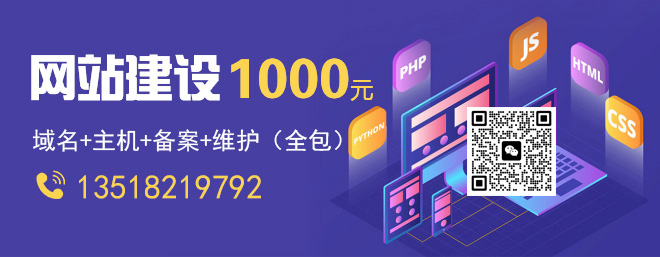Vue中怎么实现组件化通讯-创新互联
本篇文章为大家展示了Vue中怎么实现组件化通讯,内容简明扼要并且容易理解,绝对能使你眼前一亮,通过这篇文章的详细介绍希望你能有所收获。

1. Vue的组成文件(.vue)
分为三部分,分别对应html,js,css
<template></template> <script></script> <style></style>
2. Vue的生命周期函数
beforeCreate() 创建数据之前
created() 创建数据 我们在这里的得到我们在data里面创建的数据
beforeMount() // Dom渲染完成前
mounted() //Dom渲染完成
beforeUpdate() // 更新视图 在beforeUpdate触发时,视图已经更新完成
Updated() //更新数据调用的函数、。
<div id='app'>
<p>{{msg}}</p>
<input type='text' v-model='msg'>
</div>
var app = new Vue({
el: '#app',
data() {
return {
msg: 1
}
},
beforeCreate() {
console.log('beforeCreate', this.msg); //beforeCreate undefined
console.log('beforeCreate: ', document.getElementsByTagName('p')[0]) //beforeCreate <p>{{msg}}</p>
},
created() {
// 创建数据
console.log('created', this.msg); //beforeCreate 1
console.log('created: ', document.getElementsByTagName('p')[0]) //beforeCreate <p>{{msg}}</p>
// 异步处理得到渲染的dom数据
setTimeout(() => {
this.msg = 100
console.log('nextTick', document.getElementsByTagName('p')[0])
}, 100)
// nextTick <p>100</p>
},
beforeMount() {
console.log('beforeMount', this.msg) //beforeMount 1
console.log('beforeMount: ', document.getElementsByTagName('p')[0]) // beforeMount <p>{{msg}}</p>
},
mounted() {
// 渲染dom
console.log('mounted', this.msg) //mounted 1
console.log('mounted: ', document.getElementsByTagName('p')[0]) //mounted <p>1</p>
},
beforeUpdate() {
console.log('beforeUpdate', this.msg) //beforeUpdate 100
console.log('beforeUpdate: ', document.getElementsByTagName('p')[0]) //beforeUpdate <p>100</p>
},
updated() {
console.log('updated', this.msg) // updated 1
console.log('updated: ', document.getElementsByTagName('p')[0]) // updated <p>100</p>
}
})生命周期参考链接
3. export default
每一个模块都是自己的作用域,相应的属性来处理数据和函数
data(声明数据,可以是函数和属性)
类型:Object | Function
组件只接受函数
// 对象的形式
export default{
data: {
a:1
}
}
// 函数的形式
export default{
data(){
return {
a: 1
}
}
}methods(一些指令和其他属性的调用方法)
不要用箭头函数来写里面的函数
this指向Vue的实例
export default{
methods: {
plus() {
this.a++
}
}
}1、components (组件化定义)
类型: Object
自定义元素,增加代码的复用性
// 当我们引用一个.vue文件的时候,就像使用这个文件来充当我们主体的一部分
<div>
<hello></hello>
</div>
import hello from './hello.vue'
export default {
components: {
hello
}
}2、computed(计算属性)
计算属性的结果会被缓存,依赖的数据发生变化才会重新渲染
注意计算属性和methods,watch的区别
{{this.total}} //[3,4]
<button @click='add'>添加数据</button> //点击会更新this.total
export default {
data: () => ({
a: 1,
b: [2,3]
}),
methods: {
add(){
this.b.push(8);
}
},
computed: {
total(){
return this.b.map((item)=>{
return item+this.a
})
}
}
}watch(监听对应的数据)
键值对。键是我们需要监督的数据,值是相应的回调函数
回调函数接受2个参数,新的值和旧的值(对于数组和对象不会出现旧值,对于简单的数据会出现旧值)
监听对象的内部值变化,需要添加deep:true(数组不用)
// 点击后相应的变化
data(){
return {
a: 1,
b: [2,4,6],
c:{name:'hcc',age:22}
}
},
methods: {
add(){
this.a++
this.b.push(8)
this.c.name = 'yx'
}
},
watch: {
b: function(val, oldVal){
console.log('new', val) //[2,4,6,8]
console.log('new', oldVal) //[2,4,6,8]
},
a: function(val, oldVal){
console.log(val); //2
console.log(oldVal); //1
},
c:{
handler(val){
console.log(val); //{name: 'yx',age: 22}
}
}
},props(用于接受父组件传来的数据)
规定和接受父组件的数据
单向数据流,子组件不能修改传递过来的数据
对象和数组是引用类型,指向同一个内存空间,如果 prop 是一个对象或数组,在子组件内部改变它会影响父组件的状态。
可以规定接受的数据类型和默认值,如果是对象和数组,默认值导出是一个函数
// 父组件
<hello :formParent='num'></hello> //html
components: {
hello
},
data(){
return {
num: 3
}
}
//子组件
//1. 数组规定接受的数据
props: ['hello']
//2. 验证的方式
props:{
hello: Number,
hello: [String, Number],
hello: {
type: Object,
default(){
return {message: 'hello'}
}
}
}v-on和v-emit(子组件向父元素传递数据)
vm.$emit: 子元素向父元素定义讯号和传递数据
this.$emit('规定的讯号名称', '想传递给父元素的数据')
vm.$on: 监听讯号,并触发相应的函数(函数内部不用传参)
@'规定的讯号名称'='调用自己组件的方法并可以接受传递的参数'
// 子组件
data () {
return {
msg: 'Welcome to Your Vue.js App'
}
},
methods: {
change(){
this.$emit('sendMsg',this.msg) //把msg传递给父组件
}
}
// 父组件
// 引入子组件,并定义components
components: {
hello
},
methods: {
show(msg){ // 这里接受子组件传递的参数
console.log(msg);
}
}
<hello @sendMsg='show'></hello> // 这里不用传递参数,不然会覆盖子元素传递的参数ref(用来获取dom和子组件)
可以用来操作dom<p ref="p">hello</p>
可以用来组件中的通讯
在组件中使用的this.refs是一个对象,包含了所有的绑定了的dom和子组件
// html
<h2 ref="myElement">这是一个dom元素</h2> //dom元素
<hello :propnum="propnum" :obj='d' @getson='getMsg' ref='child'></hello> // 子组件
>-- 组件中this.refs => {myElement: h2, child: VueComponent}
// 运用(在父元素中调用子元素的方法)
// html
<hello ref='child'></hello>
// 子元素hello
methods: {
change() {
this.$emit('getson',this.msg)
this.obj.name = 'yx'
},
drop(el) {
el.style.background = 'red';
}
},
// 父元素
methods: {
add() {
console.log(this.refs); //{child: VueComponent}
this.$refs.child.drop('这里传递父元素的dom节点')
}
}
//如果有一个需求是,一个父元素有2个子组件,其中一个子组件的方法要调用另一个子组件的dom元素
//1. 一个子组件需要向父组件发送元素this.$emit('方法名',dom)
//2. 父元素接受到子组件的传递得到对应dom
//3. 父元素通过this.$refs调用对应的另一个子组件的方法并传入参数
// 子元素hello和world
<div class="world">
<h2 ref="world">这是world的dom元素</h2>
<button @click='send'>给父元素传递dom</button>
</div>
methods: {
send(){
this.$emit('give',this.$refs.world); //给父元素发送dom
}
<div class='hello'>
<button>改变dom</button>
</div>
methods: {
changeDom(target){
console.log(target)
}
}
// 父元素
<world @give='父亲自己的方法'></world>
<hello ref='helloChild'></hello>
methods: {
// 这里接受子元素传递过来的dom元素
'父亲自己的方法'(target) {
this.refs.helloChild.changeDom(target) //调用另一个子元素的方法,并把dom传递过去
}
}上述内容就是Vue中怎么实现组件化通讯,你们学到知识或技能了吗?如果还想学到更多技能或者丰富自己的知识储备,欢迎关注创新互联网站建设公司行业资讯频道。
另外有需要云服务器可以了解下创新互联建站www.cdcxhl.com,海内外云服务器15元起步,三天无理由+7*72小时售后在线,公司持有idc许可证,提供“云服务器、裸金属服务器、高防服务器、香港服务器、美国服务器、虚拟主机、免备案服务器”等云主机租用服务以及企业上云的综合解决方案,具有“安全稳定、简单易用、服务可用性高、性价比高”等特点与优势,专为企业上云打造定制,能够满足用户丰富、多元化的应用场景需求。
分享名称:Vue中怎么实现组件化通讯-创新互联
文章链接:https://www.cdcxhl.com/article38/deehsp.html
成都网站建设公司_创新互联,为您提供网站排名、App设计、微信小程序、电子商务、ChatGPT、虚拟主机
声明:本网站发布的内容(图片、视频和文字)以用户投稿、用户转载内容为主,如果涉及侵权请尽快告知,我们将会在第一时间删除。文章观点不代表本网站立场,如需处理请联系客服。电话:028-86922220;邮箱:631063699@qq.com。内容未经允许不得转载,或转载时需注明来源: 创新互联

- 万网M3型Windows云主机如何实现伪静态 2023-03-16
- 老域名对泰州SEO的好处有哪些? 2023-06-03
- 网页设计制作公司针对网页色彩搭配原则 2022-08-30
- 企业建立微网站究竟要从哪些方面考虑 2021-11-19
- 网站优化排名如何制定计划 2014-12-03
- 如何撰写有吸引力的创意 2021-10-26
- 网站内页如何做长尾词排名? 2015-12-16
- Qq群推广营销如何去做呢? 2017-03-07
- 百度SEO优化中吸引蜘蛛的几点小技巧 2016-10-29
- 有人说:这些App应用开发应该少做了,怎么回事? 2022-08-19
- 网站优化关键词应该怎样选取? 2022-12-09
- 做网站设计一般需要经历哪些过程 2023-08-17